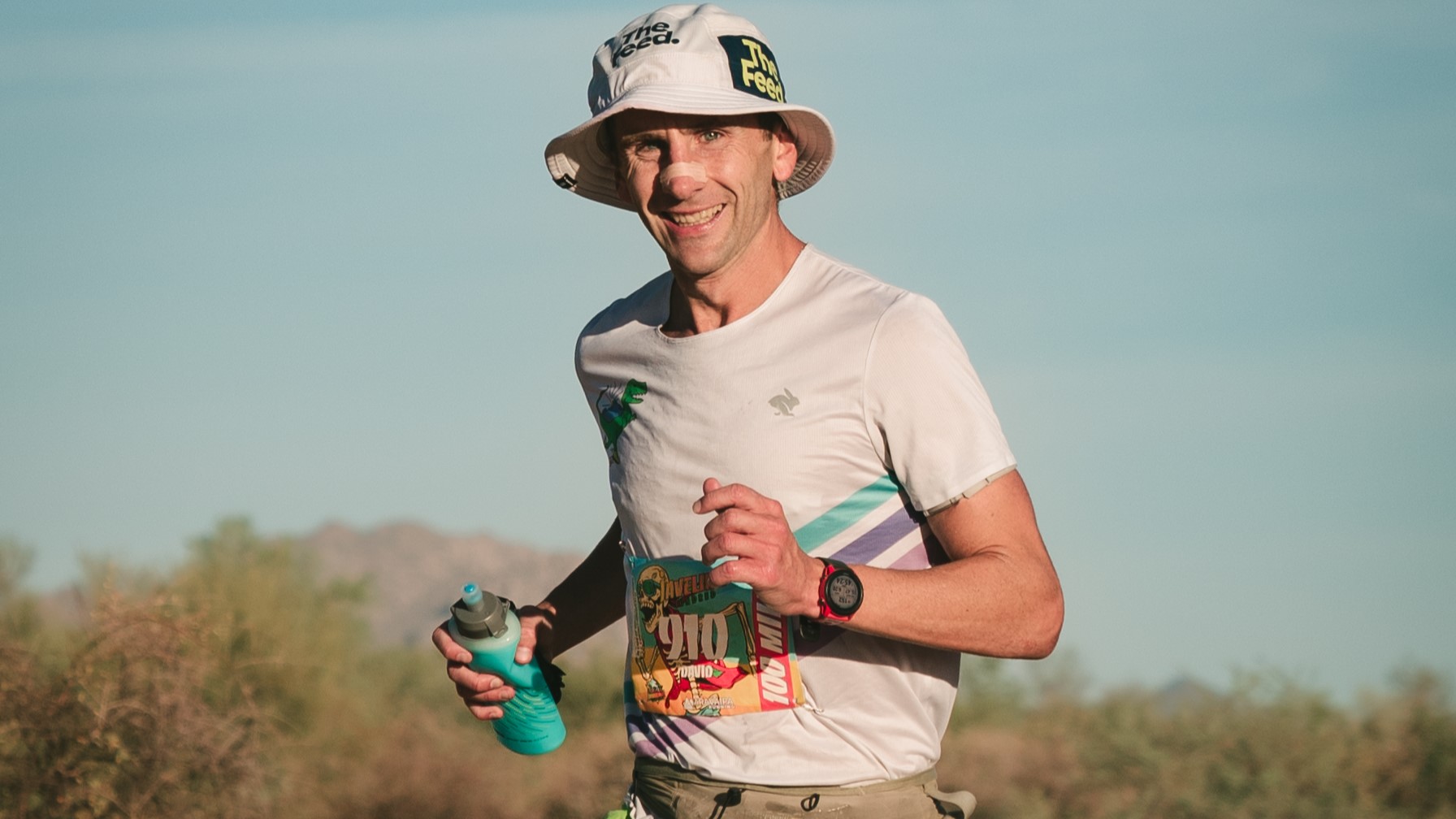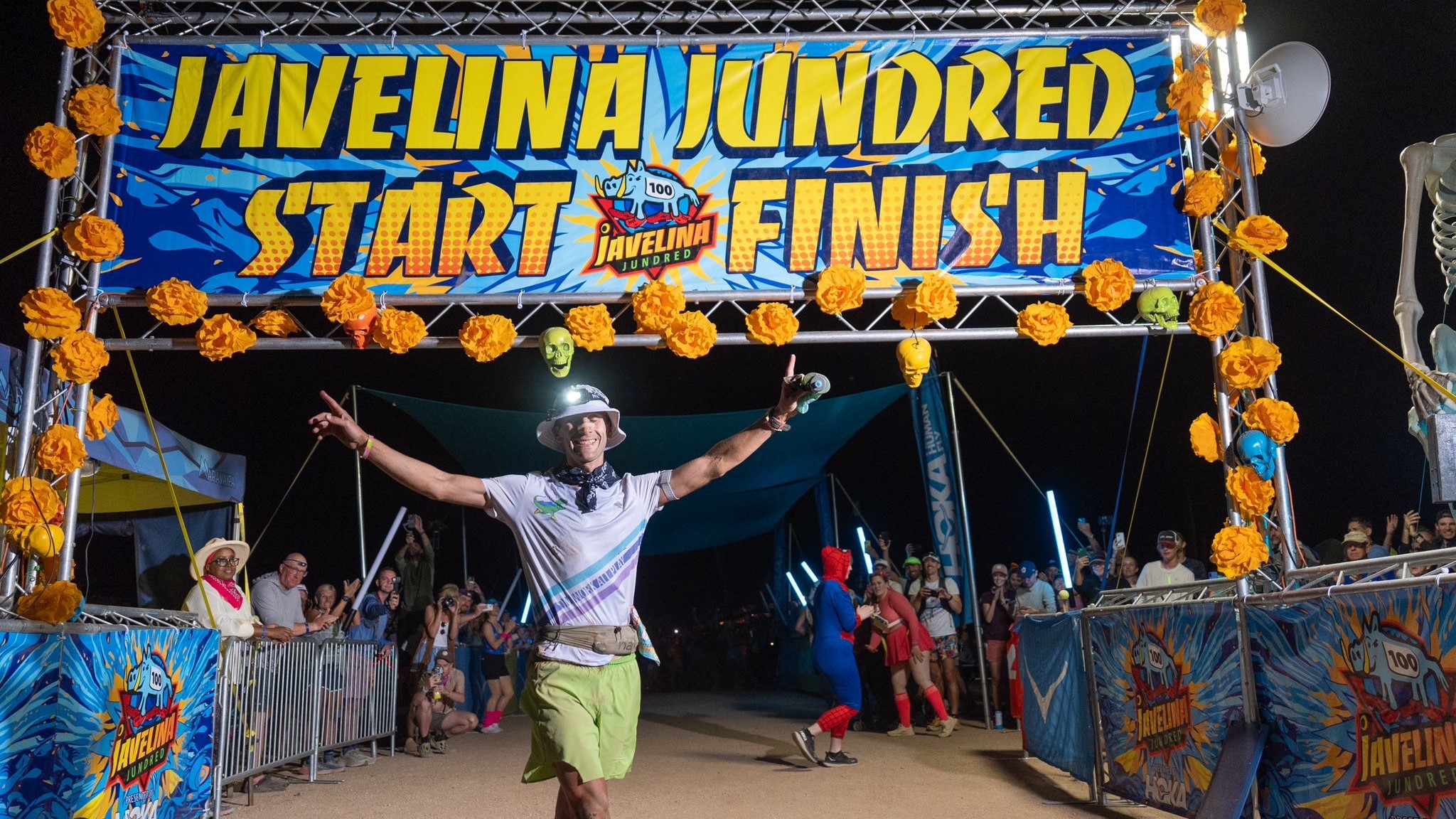
Last weekend, ultra runner David Roche snatched victory at the scorching Javelina Jundred race. The Boulder-based runner came in just two minutes behind the course record time, despite daytime highs of 100 degrees. How did he pull off his unlikely victory? Yesterday, Roche explained exactly how he harnessed the science of heat training to pull off his unlikely victory at the 100-mile race.
Writing on Instagram, Roche explains that running in hot weather doesn't come naturally to him.
"I always thought that I sucked in hot weather. We were going to have to science the crap out of this problem."
The Arizona course delivers no shade or creeks to cool off in, so to start, Roche hit the hot tub at 104 degrees 2 - 3 times per week to increase hemoglobin, staying in until his heart rate reached 100 on rest days, and 110 if he was soaking immediately.

One month before the race, he started donning extra layers for uphill treadmill runs several times a week. His "heat suit" entailed a base layer of normal running clothes, a sweatshirt under a down jacket, polyester sweatpants under rain pants and a fuzzy hat.
Finally, he incorporated two "massive" treadmill workouts in a room that was around 80 degrees in the three weeks before race day.
"My main goal was to gaslight myself into thinking I enjoyed the heat," he concludes.
"In reality, I still don’t love the heat. But I love science. And I think we scienced this problem so hard that I had one of the better heat performances ever."
Roche has burst onto the US trail running scene this year and hasn't been shy about sharing how he utilizes science to make the podium. In August, he shared how he used nutrition science to break the longstanding record at the Leadville 100 a feat which entailed slurping over 40 running gels in a 15-hour period.
What is heat training?
Heat training is a protocol that helps your body make more blood plasma, which allows you to cool down more efficiently. Through heat training, your body lowers the temperature at which you start to sweat and you lose less sodium through your sweat.
What this allows you to do is to adapt for a hot race or warm weather training, and if done for a long enough period – about five weeks – your body reacts to that addition in plasma by building more hemoglobin.
“More hemoglobin means that you're getting more oxygen to your muscles which is the same effect that altitude training has,” explains Brian Maiorano, an endurance coach from CORE Sensor which makes a wearable device you can wear while running or exercising to determine your heat training zone. You can learn more in our in-depth article on heat training.




!["[T]he First and Fifth Amendments Require ICE to Provide Information About the Whereabouts of a Detained Person"](https://images.inkl.com/s3/publisher/cover/212/reason-cover.png?w=600)


